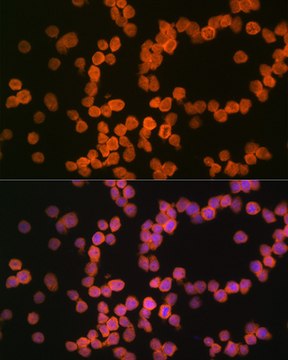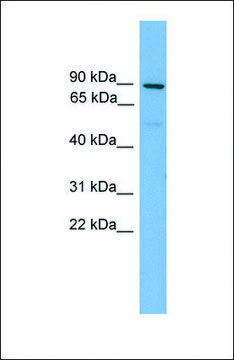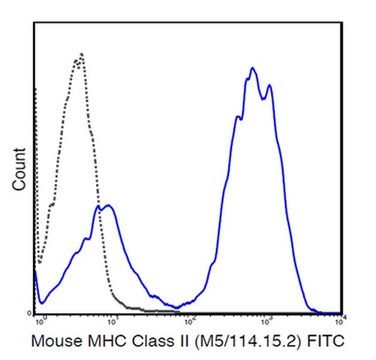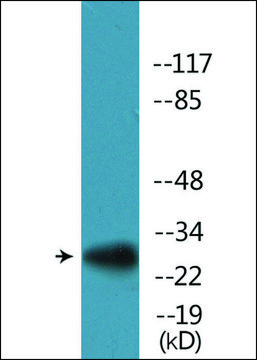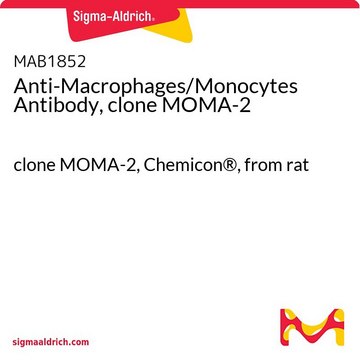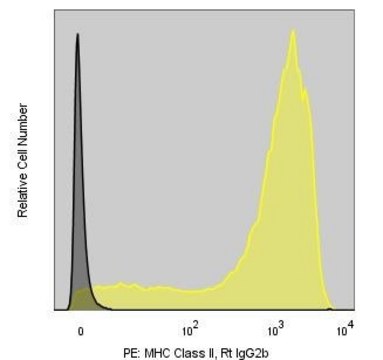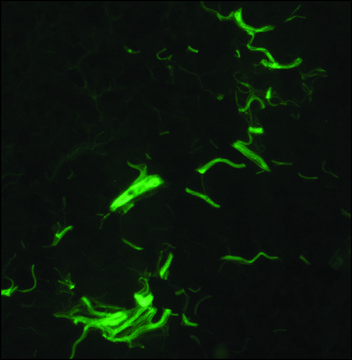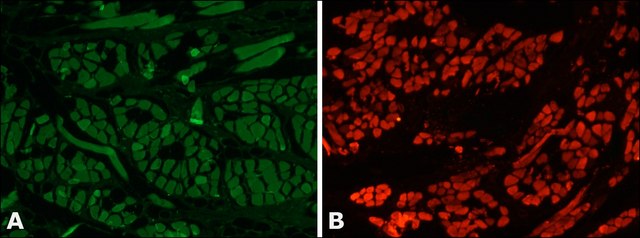SAB4700663
Monoclonal Anti-MHC Class II-FITC antibody produced in rat
clone M5/114, purified immunoglobulin, buffered aqueous solution
Synonym(s):
Rat Monoclonal Anti-MHC Class II-Fluorescein isothiocyanate
Sign Into View Organizational & Contract Pricing
All Photos(1)
About This Item
UNSPSC Code:
12352203
NACRES:
NA.41
Recommended Products
biological source
rat
Quality Level
conjugate
FITC conjugate
antibody form
purified immunoglobulin
antibody product type
primary antibodies
clone
M5/114, monoclonal
form
buffered aqueous solution
species reactivity
mouse
concentration
0.5 mg/mL
technique(s)
flow cytometry: suitable
isotype
IgG2b
shipped in
wet ice
storage temp.
2-8°C
target post-translational modification
unmodified
Related Categories
General description
Major histocompatibility complex II (MHCII) is specifically localized on antigen presenting cells, such as macrophages, dendritic cells and B cells. MHC class II are classified in to two types classical and non- classical MHC class II molecules. In humans, there are three classical class II molecules HLA-DP, -DQ and –DR and two non-classical molecules, namely HLA-DM and –DO.
The rat monoclonal antibody M5/114 reacts with murine MHC class II glycoproteins. It recognizes a shared determinant on I-Ab, I-Ad, I-Aq, and I-Ed, I-Ek alloantigens, but it does not react with I-Af, I-Ak, I-As. This antibody can inhibit I-A-restricted T cell responses of the H-2b, H-2d, H-2q, H-2u but not H-2f, H-2k, H-2s haplotypes.
Immunogen
Activated C57BL/6 mouse spleen cells
Application
The reagent is designed for Flow Cytometry analysis. Suggested working dilution is 4 μg/mL of sample. Indicated dilution is recommended starting point for use of this product. Working concentrations should be determined by the investigator.
Biochem/physiol Actions
Major histocompatibility complex II (MHCII) plays a vital role in initiating immune response by presenting peptides derived from extracellular pathogens to T cells bearing the CD4 marker. Mutations in the gene increase the risk of susceptibility to autoimmune diseases such as diabetes mellitus, rheumatoid arthritis and pemphigus vulgaris.
Features and Benefits
Evaluate our antibodies with complete peace of mind. If the antibody does not perform in your application, we will issue a full credit or replacement antibody. Learn more.
Physical form
Solution in phosphate buffered saline, pH 7.4, with 15 mM sodium azide.
Disclaimer
Unless otherwise stated in our catalog or other company documentation accompanying the product(s), our products are intended for research use only and are not to be used for any other purpose, which includes but is not limited to, unauthorized commercial uses, in vitro diagnostic uses, ex vivo or in vivo therapeutic uses or any type of consumption or application to humans or animals.
Not finding the right product?
Try our Product Selector Tool.
Storage Class Code
10 - Combustible liquids
Flash Point(F)
Not applicable
Flash Point(C)
Not applicable
Regulatory Information
常规特殊物品
Choose from one of the most recent versions:
Already Own This Product?
Find documentation for the products that you have recently purchased in the Document Library.
A molecular basis for MHC class II--associated autoimmunity
Todd JA, et al.
Science, 240, 1003-1009 (1988)
REGULATION OF MHC CLASS II GENES: Lessons from a Disease
Mach B, et al.
Annual Review of Immunology, 1996, 301-331 (1996)
Li Dong et al.
Journal of inflammation research, 14, 2471-2482 (2021-06-19)
Parkinson's disease is a common neurodegenerative disease in the elderly. The incidence of various cancers in Parkinson's disease patients is significantly lower than in healthy people. Parkinson's disease patients are individuals with a high tendency for inflammation, whose peripheral immune
Genetic Control of MHC Class II Expression
Ting JP and Trowsdale J
Cell, 109, S21-S33 (2002)
Our team of scientists has experience in all areas of research including Life Science, Material Science, Chemical Synthesis, Chromatography, Analytical and many others.
Contact Technical Service
